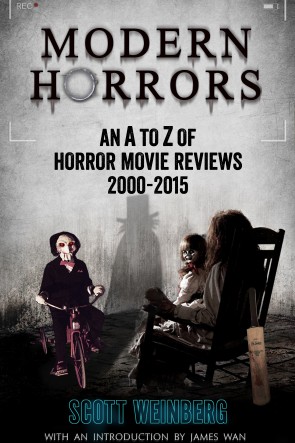Review: POLTERGEIST (2015){0}
“They’re here.” Again.
Much like a house built on top of the unrestful dead, Gil Kenan’s Poltergeist is haunted by the ghost of Tobe Hooper’s original. Few complained that the 1982 film itself drew much of its plotting from a 1962 Twilight Zone episode called “Little Girl Lost” (about a child who has slipped into the fourth dimension of a house, and her parents’ desperate attempts to get her back). Few even complained when Poltergeist was recently ‘reimagined’ as Insidious, the most profitable film of 2011. At issue here is not the lack of originality as such, but rather the reappropriation of a title – and therefore of a brand – to cash in on the original’s cachet and dance, as it were, on its grave.
There is, of course, no accounting for nostalgia – but Hooper’s film was very much of its time, and proves ripe for revisiting. As the middle-class Freelies found their domestic life being torn apart by spectral entities, the real bogeyman – shown in extreme close-up in the film’s opening shot, used by ghosts as a medium, and pointedly discarded in the final shot – was television itself, which in the early Eighties had come to dominate American living spaces and challenge parental authority. Oh how times have since changed, with the digital age opening the doors and, heh, windows of our homes to all manner of malign new outside influences. You can see it in the very visual DNA of Kenan’s film, a CG extravanganza that contrasts with the original’s last-gasp use of practical effects and (notoriously) real skeletons. Now it is not just the third dimension that we are seeing for the first time through our Real D 3D glasses, but also the paradoxical fourth dimension of the otherworld beyond the house’s portals, realised through cutting-edge digital rendering, and made visible within the story by a camera mounted on a drone which young Griffin Bowen (Kyle Catlett) operates remotely via a digital console.
All the beats of the original – the poltergeist activity, the animated tree, the black-hole bedroom closet, the haunted televisions, the team of paranormal helpers, the unburied dead – are present and correct, but there are also changes rung right from the start. If the opening blurry close-up of a staticky screen appears to ape the beginning of the original film, it quickly resolves itself into a horror-themed video game on a tablet which Griffin is playing while driving with his family to their new home – and the televisions that do eventually feature are conspicuously of the modern, flat-screened variety. Dad Eric (Sam Rockwell) has just been downsized in the recession. Mum Amy (Rosemary De Witt) is juggling child-rearing with writing. Their new house is picked up cheaply after being foreclosed in the Credit Crunch. Griffin’s older sister Kendra (Saxon Sharbino) spends most of her time Skyping or texting her friends, and insists of her smartphone: “This isn’t a luxury item, Dad, this is a necessity”. Even little Madison (Kennedi Clements) has a cute pink digital synthesiser that goes haywire when the haunting starts. Meanwhile, Zelda Rubinstein’s freaky southern medium Tangina has now become Jared Harris’ lovably Oirish ghostbuster Carrigan Burke, already known to Kendra from his reality television show. The expression “this house is clean”, lifted from the original film, is now Burke’s TV catchphrase, and comes with its own hashtag. We are a long way from 1982 here.
The original Poltergeist was a strange beast. Presumably Hooper was hired to bring to it the ineffably sick tonality of his The Texas Chain Saw Massacre (1974) or Eaten Alive (1977) – but its writer and producer, Steven Spielberg, exerted at least as much influence on the final product, giving rise to persistent rumours that he was in fact its de facto director. Whatever the truth of this, Poltergeist had far more in common with the positive vision of bourgeois suburbia found in Spielberg’s own Close Encounters of the Third Kind (1977) or E.T. – The Extra-Terrestrial (released within a week of Poltergeist) than with any unnerving Texploitation made by Hooper, and often seemed to be a feel-good family film merely masquerading as horror. Insidious certainly redressed this imbalance by damping the comedy and amping the scares – and this remake also puts more emphasis than the original on fright-filled set-pieces, multiplying the clown dolls, showing us a limbo full of writhing, gooey corpses, and even throwing in some power-tool peril for good measure. Yet despite the increased number of jumps and bumps, the original’s good nature remains. After all, Kenan has previously directed dark-tinged films for younger viewers (Monster House, City of Ember), while screenwriter David Lindsay-Abaire is best known for child-friendly scripts (Robots, Inkheart, Rise of the Guardians, Oz the Great and Powerful). The result is a ghost train hardly inferior to the first Poltergeist (which has come to be somewhat overrated in the memories of Generation X), but more up to date.
Anton Bitel (@AntBit)
POLTERGEIST is in cinemas now.








